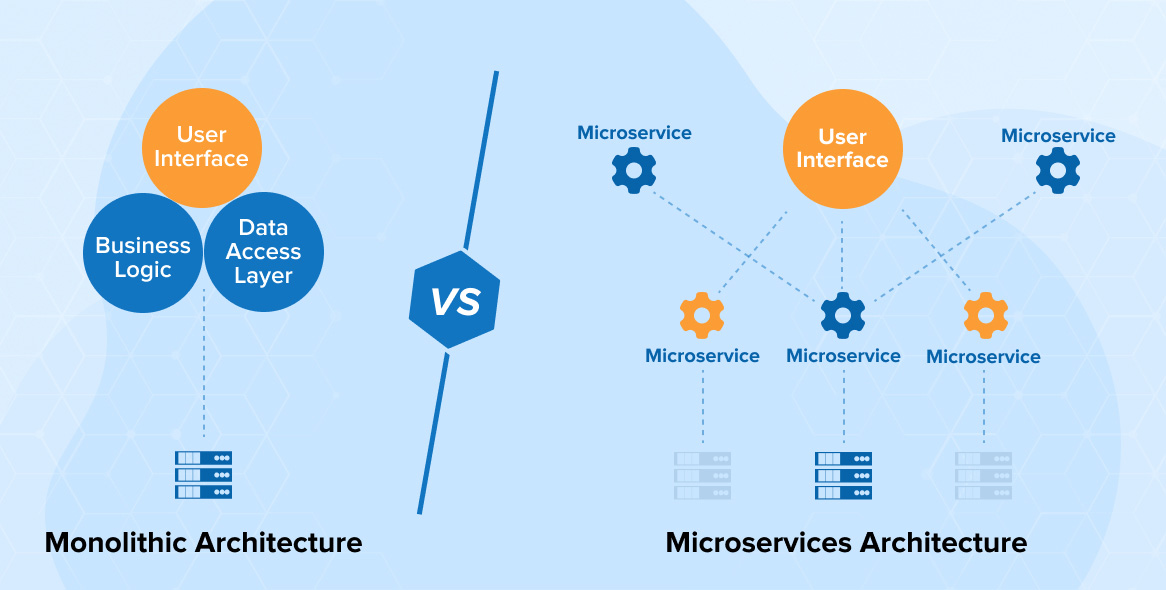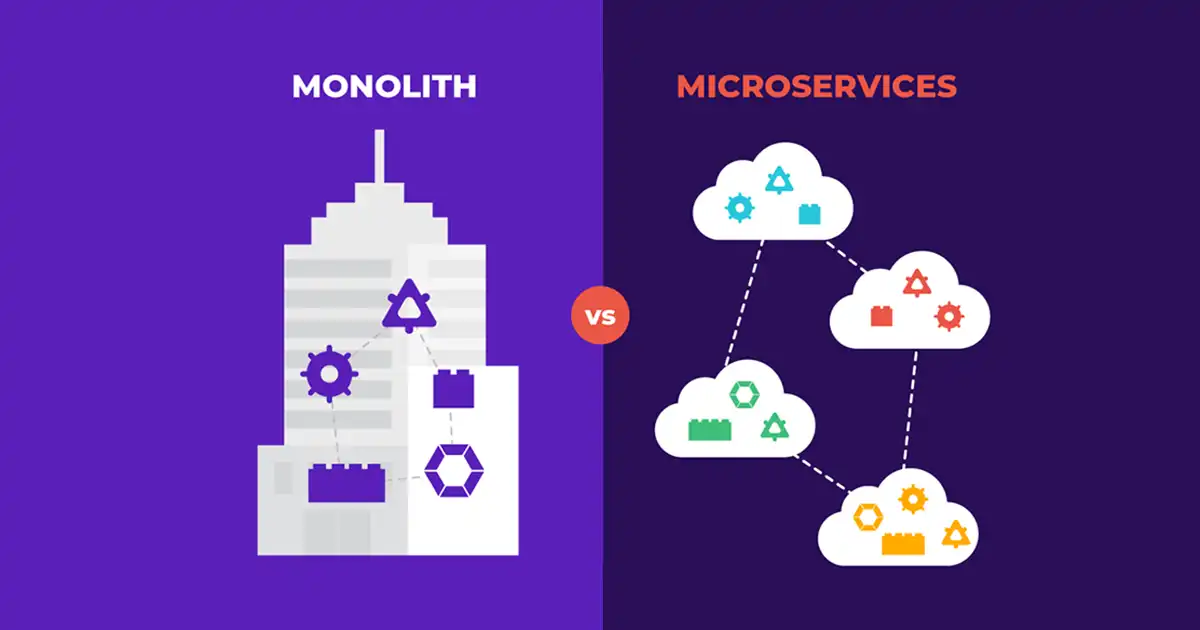Monolithic vs Microservices: Which One is Better?
Software development is a complex and dynamic process that requires choosing the right architecture for your project. One of the most common dilemmas is whether to use a monolithic or a microservices architecture. Both have their advantages and disadvantages, depending on your goals, requirements, and preferences. In this article, we will compare and contrast monolithic vs microservices architecture, explain their main characteristics, benefits, and challenges, and help you decide which one is better for your software project.
What is a Monolithic Architecture?
A monolithic architecture is a traditional model of software design, where all the components of the application are built and deployed as a single unit. A monolithic application has a single code base, a single database, and a single user interface. It is easy to develop, test, and deploy, as it does not require much coordination or integration between different parts. Nonetheless, a monolithic architecture also presents certain disadvantages, including:
- It is difficult to scale, as you have to scale the entire application, not just the parts that need more resources.
- It is hard to maintain, as any change in the code affects the whole system and requires a full redeployment.
- It is less flexible, as it is tightly coupled and does not allow for independent development or deployment of features.
- It is more prone to errors, as a bug in one component can cause the whole system to fail.
What is a Microservices Architecture?
A microservices architecture is a modern approach to software design, where the application is composed of small, independent, and loosely coupled services. Each service performs a specific function and communicates with other services through well-defined interfaces or APIs. A microservices architecture has many advantages, such as:
- It is easy to scale, as you can scale each service independently, according to its demand and performance.
- It is easy to maintain, as you can update, modify, or replace each service without affecting the rest of the system.
- It is more flexible, as it allows for independent development and deployment of features, using different technologies and languages.
- It is more resilient, as a failure in one service does not affect the whole system, and the services can recover from errors.
However, a microservices architecture also has some challenges, such as:
- Designing is hard because you need to figure out what each service should do and make sure they all work well together.
- Testing can be hard because you need to test each service separately and together, and handle transactions and data consistency across different places.
- Monitoring is hard because you need to watch how well each thing works and keep them talking to each other.
How to Choose Between Monolithic vs Microservices Architecture?
There is no definitive answer to which architecture is better for your software project, as it depends on various factors, such as:
- The size and scope of your project. If your job is easy, a big block design might work fine. If your job is hard, a microservices design might be better.
- The speed and frequency of your development and deployment. If you have to get your product out fast and often, using microservices could help because it’s flexible. But if your product doesn’t change much, a monolithic architecture might be better since it’s dependable.
- The skills and preferences of your team. If your team knows lots of tech and languages and feels good about using them, microservices might be more varied and creative. But if your team mostly sticks to one tech and language, a monolithic setup could be more together and efficient.

In the end, picking between monolithic or microservices architecture is about balancing simplicity and flexibility, reliability and scalability, and efficiency and innovation. You need to think about the good and bad points of each, and think about what your project needs and can handle. You can also mix things up by starting with a monolith and slowly switching to microservices, or by using microservices for some parts of your app and a monolith for others.
Conclusion
Choosing between monolithic vs microservices architecture is a big deal for software developers. It impacts how well their projects work. Both types have good and bad sides. There’s no one-size-fits-all answer. You need to think about what your project needs and what you prefer. Then pick the architecture that fits best.
If you need help with choosing or implementing the right architecture for your software project, you can contact ONextDigital, a leading software development company that offers web development, mobile app development, UX/UI design, white label software, and CRM & auto marketing automation solutions. We can help you create a custom and high-quality software product, using the best practices and technologies for your architecture. Contact us today and get a free consultation and quote for your software project.






